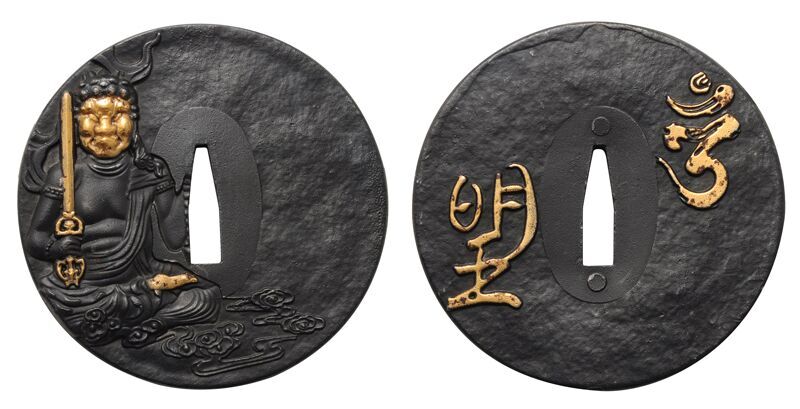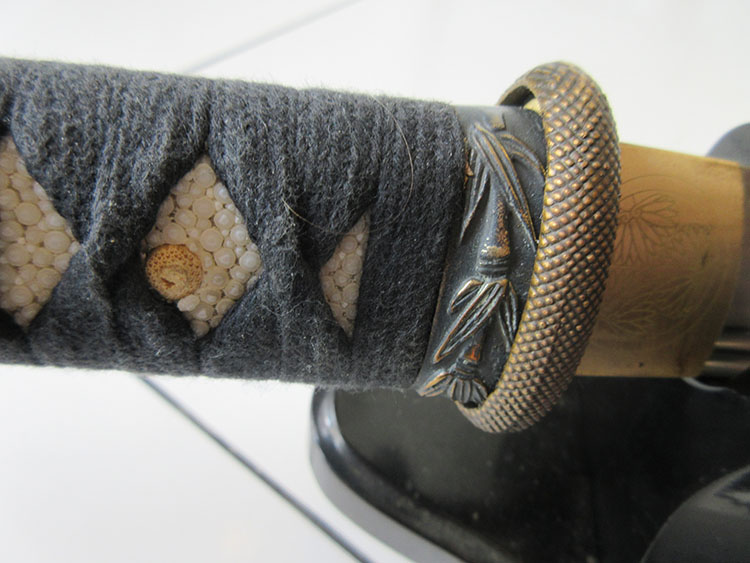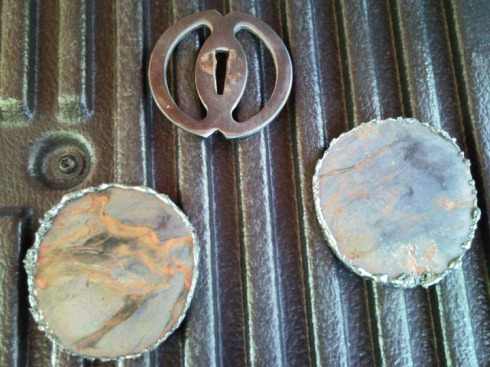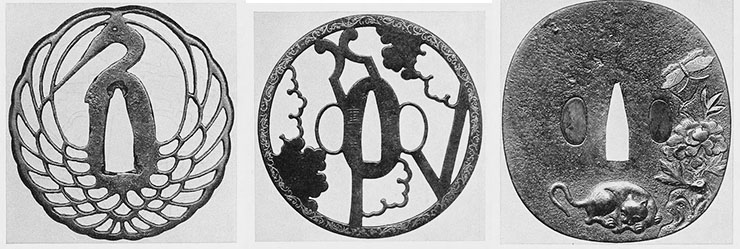Recent Articles
-
Christmas Sword Buying Guide 2025
Dec 03, 25 10:53 PM
Tsuba

The tsuba is the hand guard of a Japanese sword. Unlike European swords, which used the hand guard in part to protect against incoming attacks, while this is a factor for Japanese swords, the main purpose of the hand guard of a Katana is to prevent the users hand from slipping onto the blade.
At the same time, it is also used to counterbalance the weight of the blade (especially thick ones made from iron like the one pictured above) and was historically used to convey both social status and individual style.
In addition to the standard shape and style, there are also several specialized versions such as the hamidashi tsuba (often used on Wakizashi and Tanto, as well as on Katana) and the Aikuchi, which is a Katana with NO hand guard at all.
 Example of a 'Hamidashi' tsuba, one of many variants
Example of a 'Hamidashi' tsuba, one of many variantsWhat Tsuba are Made from, How Much they Cost and Common Problems
WHAT THEY ARE MADE FROM: They can be made from a variety of materials, from cheap (and nasty) zinc alloy to iron, brass, copper or even hardened leather. Many are richly detailed with gold and silver plating.
If you are interested, instructions on how to make your own is available on our site here
 Blanks for the foundation of making your own tsuba
Blanks for the foundation of making your own tsubaHOW MUCH THEY COST: Prices vary quite widely depending on the complexity of the design, where it is made, and whether or not is an antique. Naturally, antiques can be extremely expensive - though others are not much more than a Japanese made hand guard.
The cheapest, purely ornamental tsuba typically only cost $10-15, iron or brass ones tend to be priced just above or below the $50 mark (more if they have gold or silver inlay), while Japanese made hand guards tend to be priced between $125 to $250.
COMMON PROBLEMS: Probably the most common issue is a loose or wiggly hand guard. This can happen due to atmospheric conditions that cause the wooden handle to expand or contract, sometimes just enough that it does not sit properly, but is a relatively easy fix:
Another common problem is a hand guard that is extremely hard to remove. There are many reasons why this may occur, but below is a video showing how to remove even a stubborn one.
Finally, an issue can occur when trying to swap out hand guards - thickness may vary widely from one to another, and as a Katana is usually quite tightly assembled, there is not a lot of wiggle room for adjustment if a newly selected hand guard is too thick or too thin.
If it is too thick, it may be necessary to shift the entire assembly down the tang slightly by drilling new holes and remounting the sword. If it is too thin, it can be bolstered by using an extra seppa or two.
In the meantime, here is page on the site publicdomainreview.org with many cool pictures of of actual antique tsuba like the ones pictured below that one of our SBG members suggested as a good resource.
 Antique Tsuba, from bronze, iron, copper - many of which have been widely replicated and used on many contemporary sword designs
Antique Tsuba, from bronze, iron, copper - many of which have been widely replicated and used on many contemporary sword designsWe hope that this information on tsuba has been helpful. To return to Samurai Sword Terminology from Tsuba, click here

Buying Swords Online Can Be DANGEROUS!
Find the Best Swords in the:
Popular & Recommended ARTICLES

The ONLY true free online magazine for sword enthusiasts. Delivered once a month on the 1st day of the month, no filler and no BS, just the latest sword news & info delivered straight to your inbox.












